Jellyfish, or jellies (as some scientists would like them to be called), are mainly free-swimming members of the subphylum Medusozoa. The jellyfish form is actually the medusa phase of certain gelatinous Medusozoans, many of whom also have several other phases, including a sedentary polyp phase. Jellyfish are found across the world and fossil evidence shows that they have been in existence for at least 500 million years. The largest is thought to be the Lion’s Mane Jellyfish, whose tentacles have been recorded up to 36.6m long. The smallest is thought to be the Irukani Jellyfish, which measures one cubic centimetre (1cm3).
Hydrozoa are small, predatory animals that can live solitarily or in colonies. Mostly, they are permanently attached to the substrate, but some are pelagic (free-swimming). The individual animals of colonial hydrozoa are called zooids and they can play different roles within the colony, such as digestion (gastrozooid), reproduction (gonophores) and tentacle-bearing zooids (dactylozooids).
Both jellyfish and hydrozoans are part of the phylum Cnidaria. Most species within this phylum have stinging cells called nematocysts, located mainly on the tentacles. True jellyfish, however, also have them around the mouth and in the stomach. Also called cnidocytes, these explosive cells deliver a structure containing toxins, which can act as a weapon against predators or to immobilise or kill prey.
Cnidarians are thought to be amongst the most important planktonic and benthic predators in the sea as, when abundant, they are major consumers of plankton, including fish larvae and crustaceans. They also prey on small fish and other jellyfish species. Most are planktonic creatures, unable to swim against the current ,and are therefore carried by the currents throughout the oceans. Because of this, they cannot actively hunt prey, so many species have developed incredibly long tentacles to increase their chances of catching food.
This blog covers the identifying features of a number of species of Jellyfish and hydrozoa you are likely to find in UK waters, as well as the seasons they are present.
Jellyfish
Moon Jellyfish (Aurelia aurita)
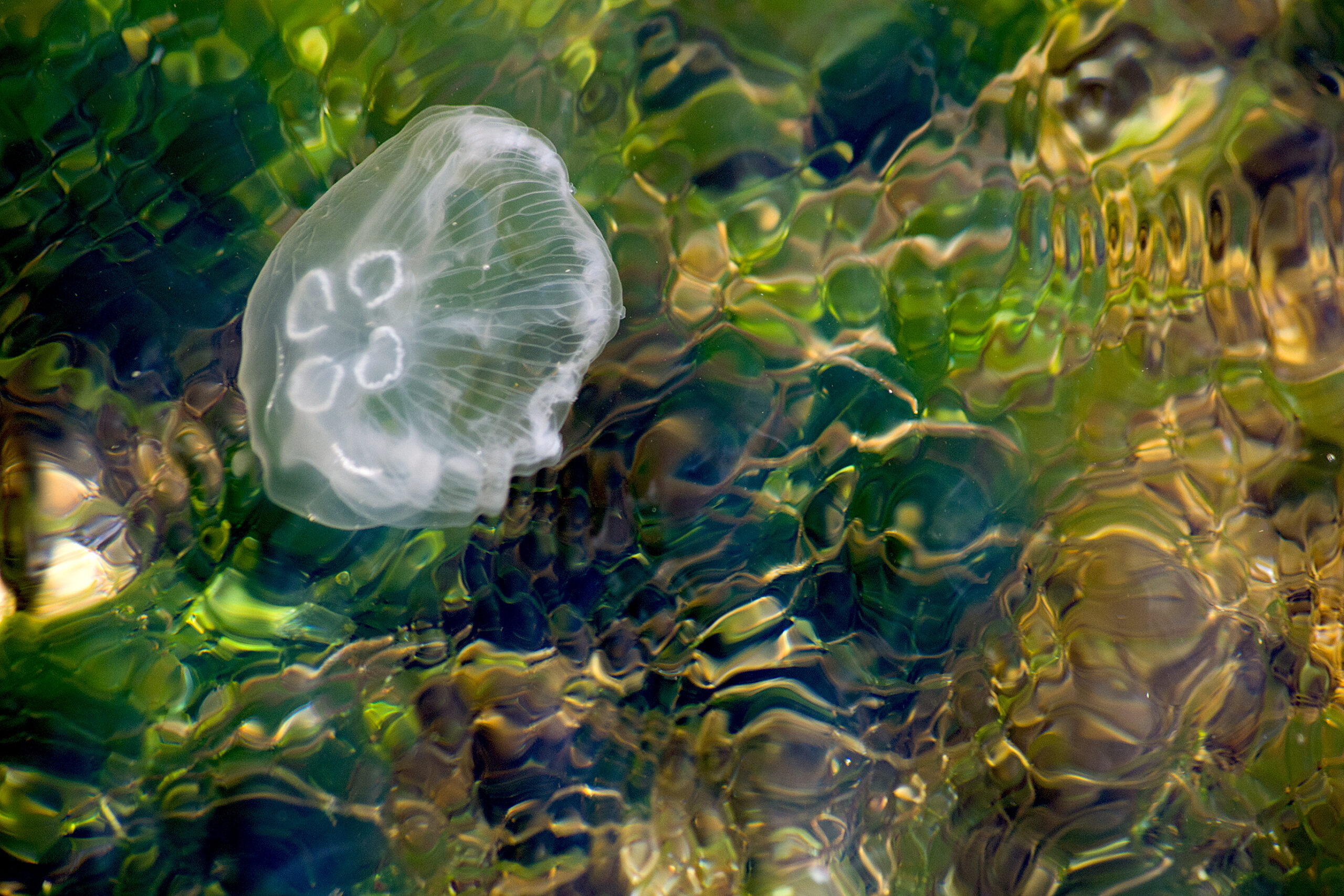
Season: All year
What to look for: This species is translucent, with a white tinge to its bell. Its most recognisable feature is the four horseshoe shapes or circles visible through the top of its body. These are reproductive organs called gonads, and can range from white to purple in colour. Moon Jellyfish have thin, short tentacles hanging from the edges of the bell, as well as four feeding appendages called oral arms which surround the mouth beneath the bell.
Compass Jellyfish (Chrysaora hysoscella)

Season: May to October
What to look for: Yellowish-white jellyfish with a brown fringe around the bell. Its name comes from the brown markings on the top of the bell, where v shapes radiate out from a central point, resembling a compass. Their oral arms are fringed, and they have long, thin tentacles around the edge of the bell.
Lion’s Mane Jellyfish (Cyanea capillata)
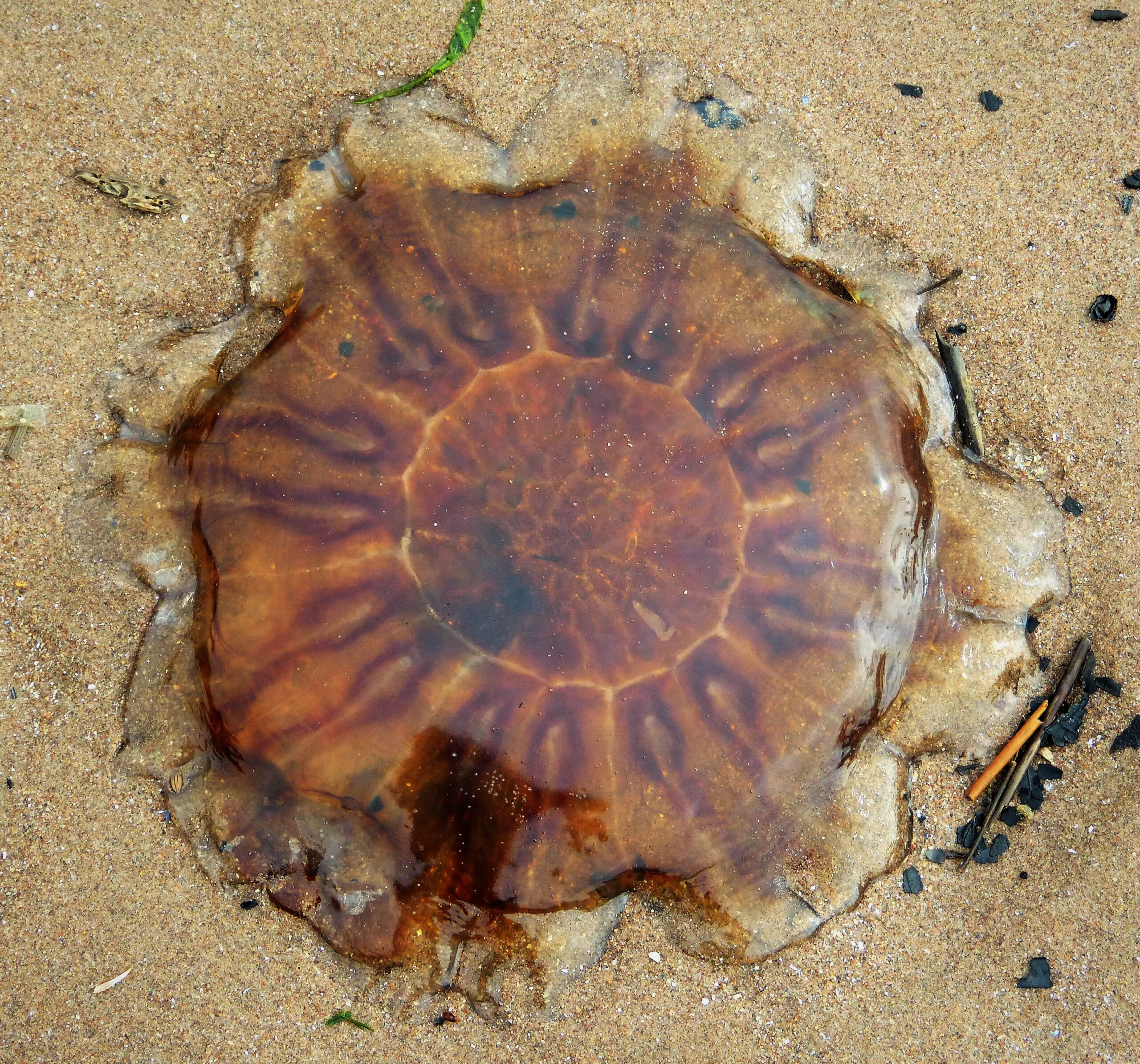
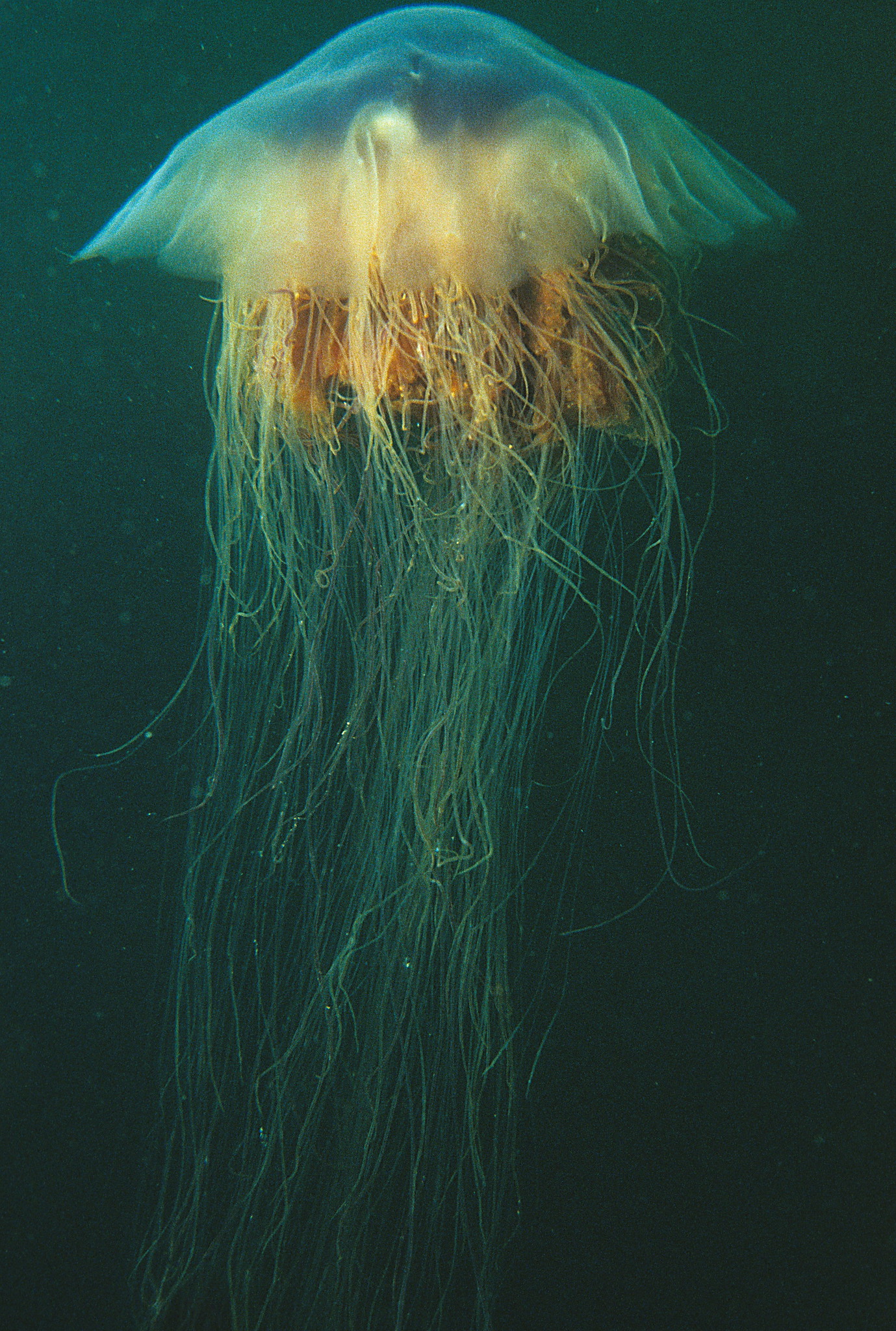
Season: May to October
What to look for: Translucent brown jellyfish, although it can also be reddish. The bell of this species has eight lobes, rather than being simply circular. This species has a thick ‘mane’ consisting of hundreds of hair-like tentacles attached to the bell’s subumbrella. They also have a number of frilly oral arms extending from around the mouth, which are shorter than the tentacles.
Did you know? The Lion’s Mane Jellyfish is one of the longest animals in the world; its tentacles can grow to over 30m long!
Barrel Jellyfish (Rhizostoma pulmo)
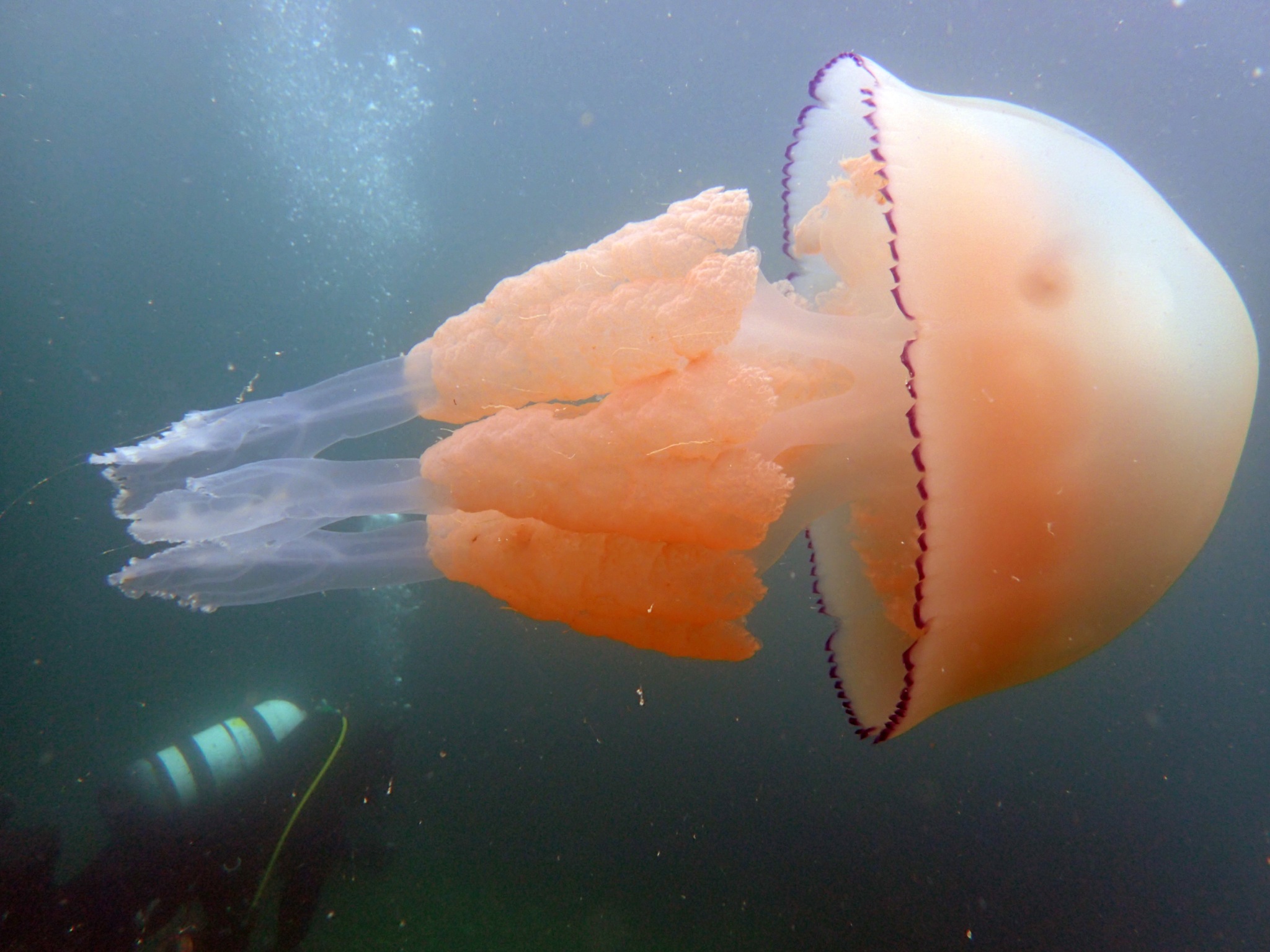
Season: May to October
What to look for: The Barrel Jellyfish is a large translucent jellyfish, with a huge mushroom-shaped bell. They lack tentacles on the edges of their bell, but they do have a violet fringe containing sensory organs with eight frilly tentacles below this.
Blue Jellyfish (Cyanea lamarckii)
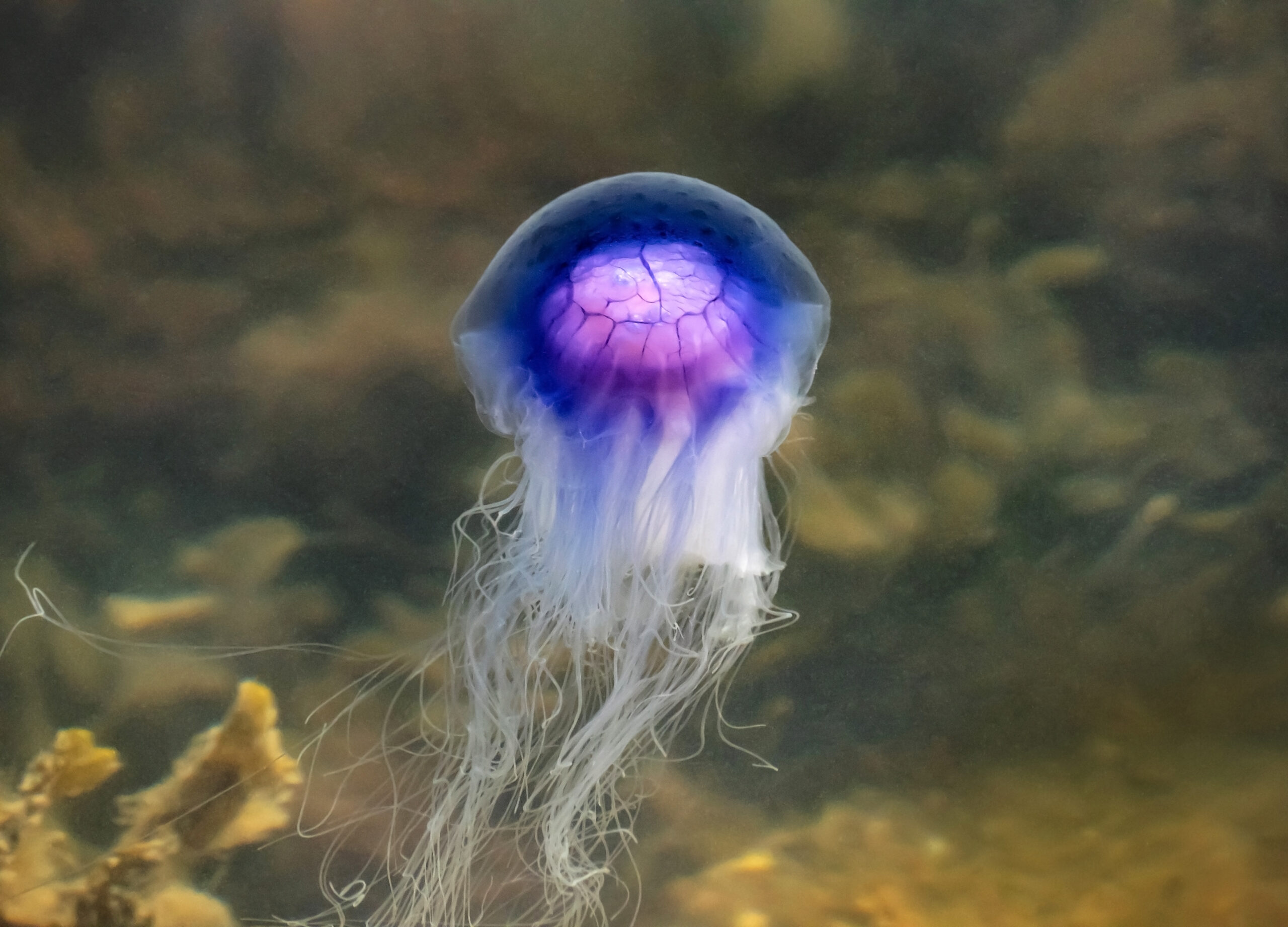
Season: May to October
What to look for: Also called the Bluefire Jellyfish, this species can vary in colouration depending on maturity, so may have a blue, purple or yellow tone. Yellow toned individuals may be confused with Lion’s Mane Jellyfish, however Blue Jellyfish can be distinguished by their smaller size and fewer tentacles. They can grow up to 30cm in length, although most individuals usually measure between 10–20cm. They can have a dark blue, circular, sun-like pattern on the top of their bell, as well as long marginal tentacles and several, frilly oral arms.
Mauve Stinger (Pelagia noctiluca)

Season: July to October, but dependent on weather and ocean currents
What to look for: This species has a dome-shaped bell that is covered in wart-like stinging cells and eight marginal tentacles emanating from the edges of the bell. They also have four long oral arms that also have wart-like nematocysts down one side; while the other side is crenulated, giving the arms a slightly frilly appearance. The colour of this species varies from mauve, pink and purple to light brown or yellow.
Hydrazoa
Portuguese Man o’ War (Physalia physalis)
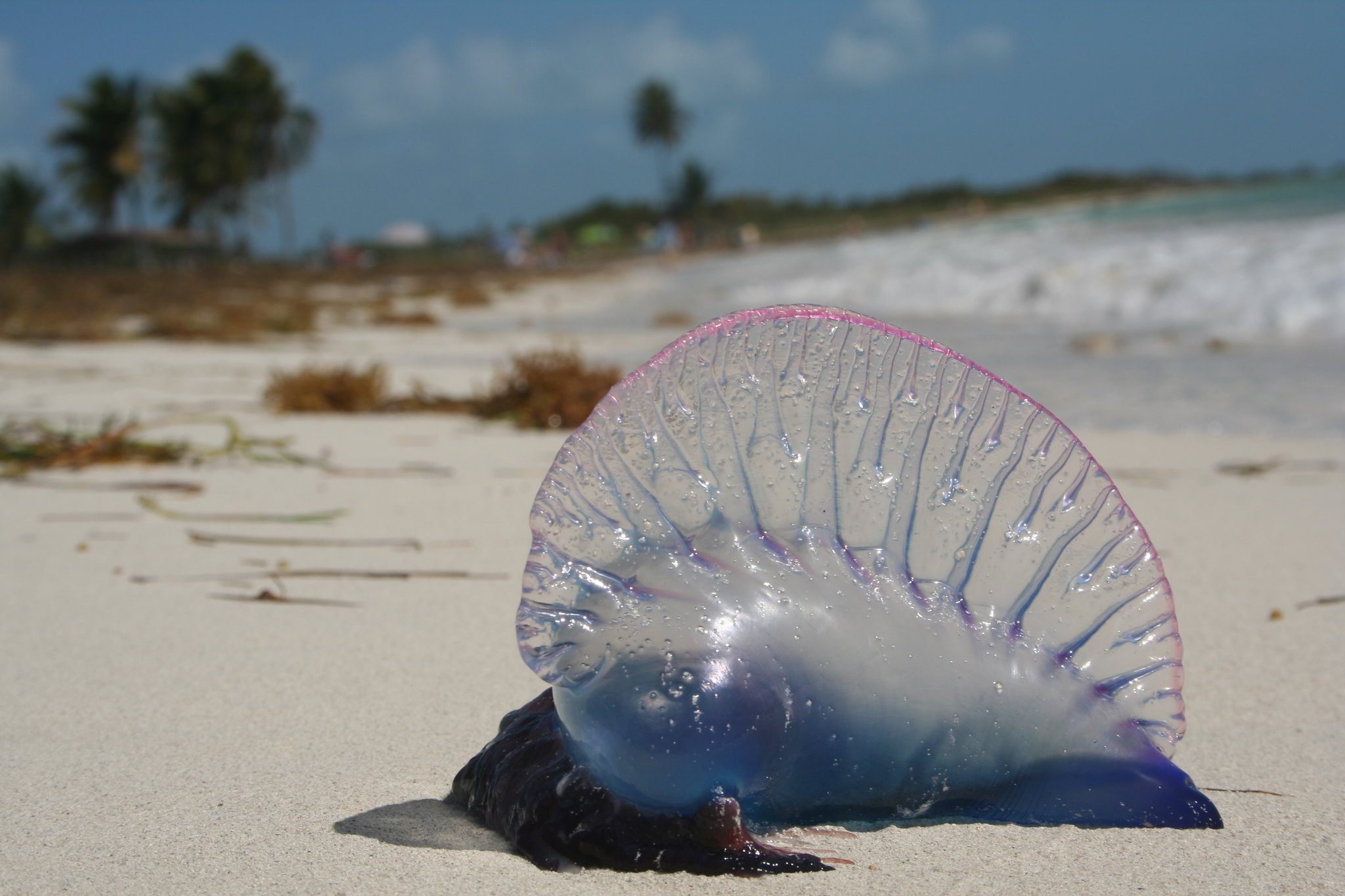
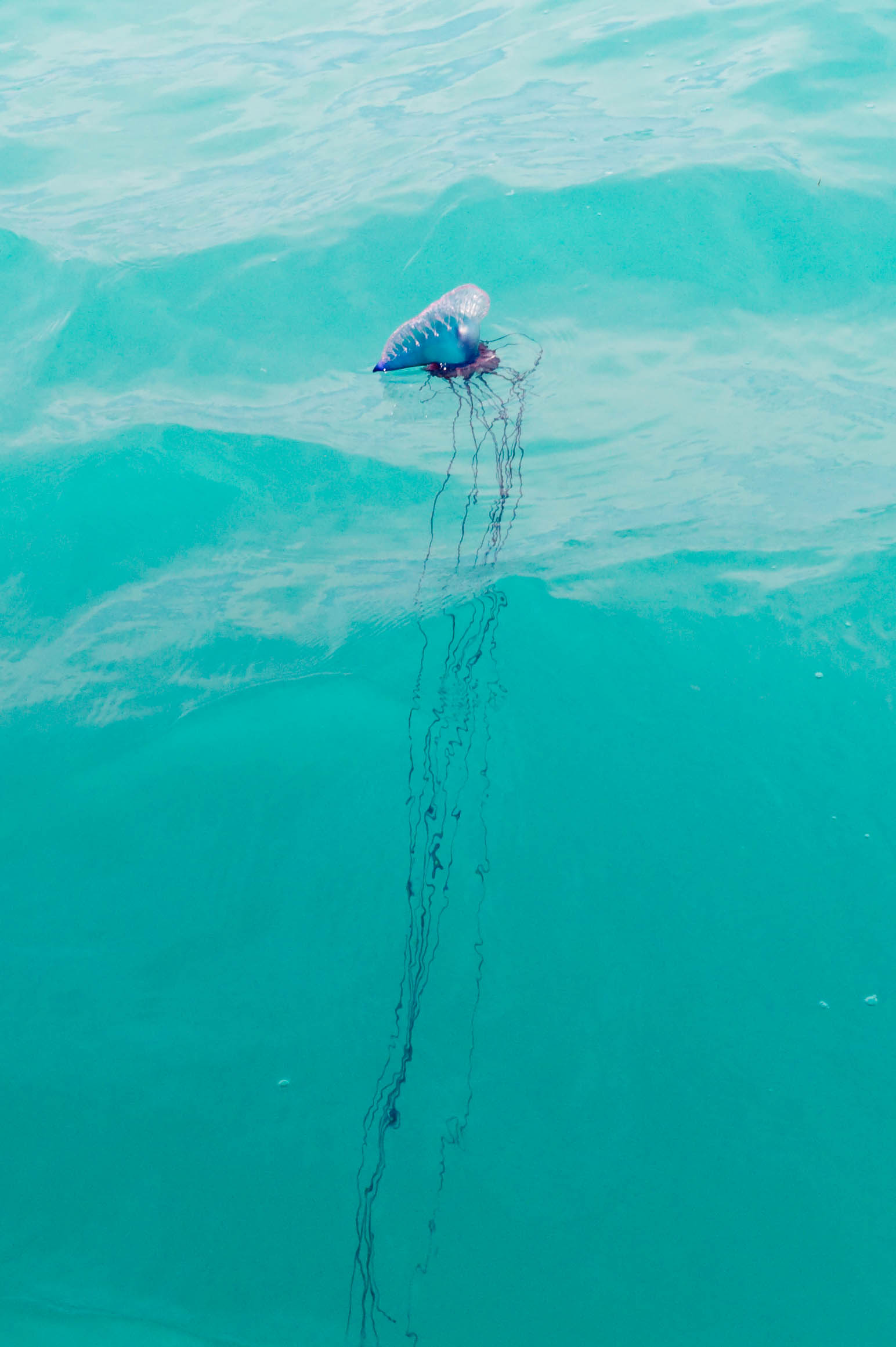
Season: September to December
What to look for: The Portuguese Man o’ War is not one animal, but a colony organism made up of four polyp types. The uppermost polyp is the gas-filled structure called the pneumatophore, which sits on the surface of the water and is the most visible. It is mostly transparent, with a blue, pink or purple tinge. The top edge of this structure resembles a sail. Two other polyps cooperate to allow the colony to hunt and feed: the polyp containing gastrozooids and the tentacles (dactylozooids). These tentacles can be a variety of colours, such as blue, purple or clear, and hang down below the surface. The final polyp type is the gonodendron, the compound reproductive structure that can be found hanging just below the pneumatophore. These can also vary in colour, and are often deep blue, pink or purple.
By-the-wind-sailor (Velalla velalla)
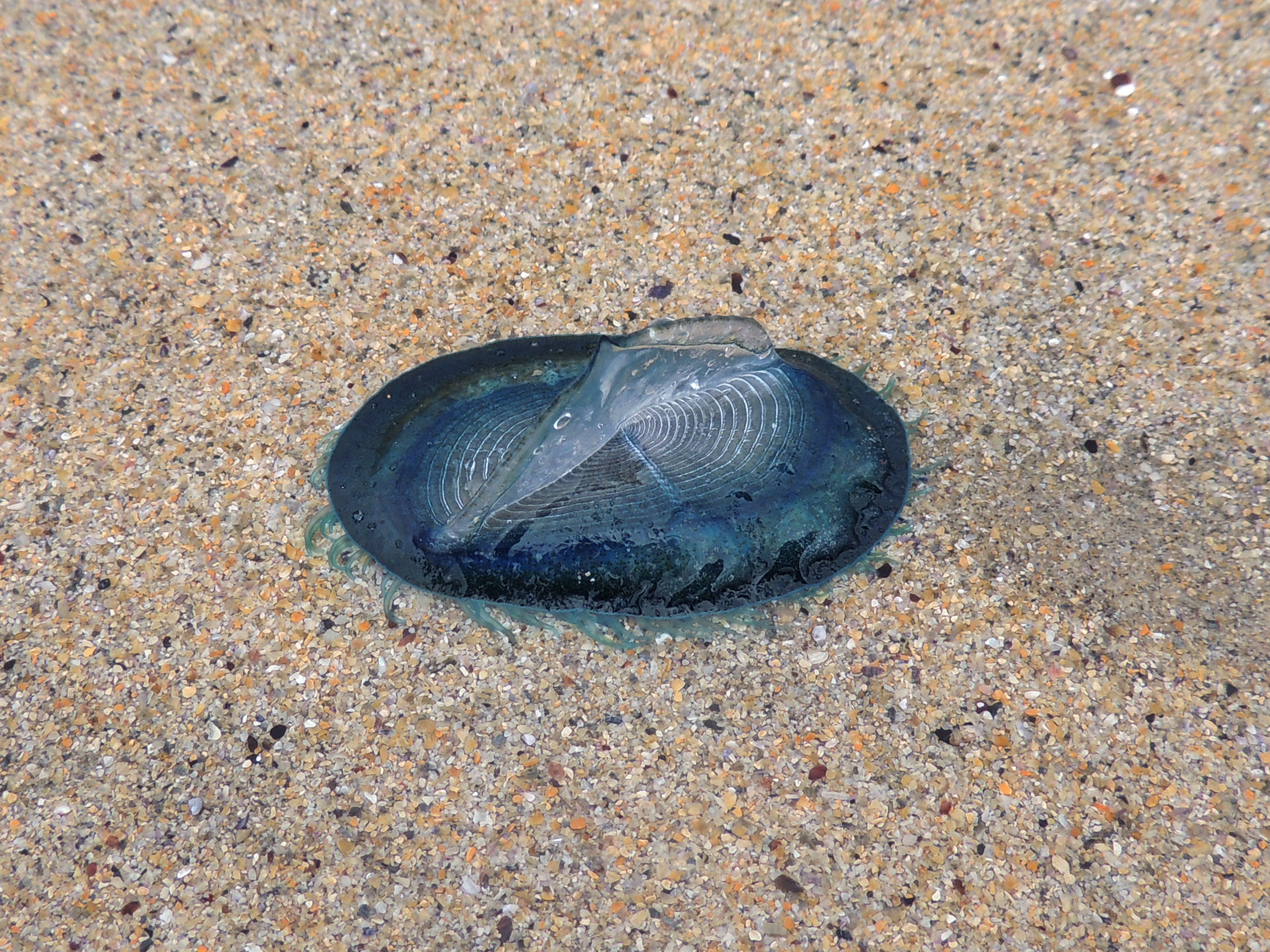
Season: September to March
What to look for: This species is also a colonial hydroid made up of multiple polyps, and contains gonozooids and dactylozooids. It has an oval disc that is deep blue in colour and acts as a float, with short tentacles hanging down from it. A semi-circular fan is set atop the float like a sail which aids its movement through the water via wind power.






